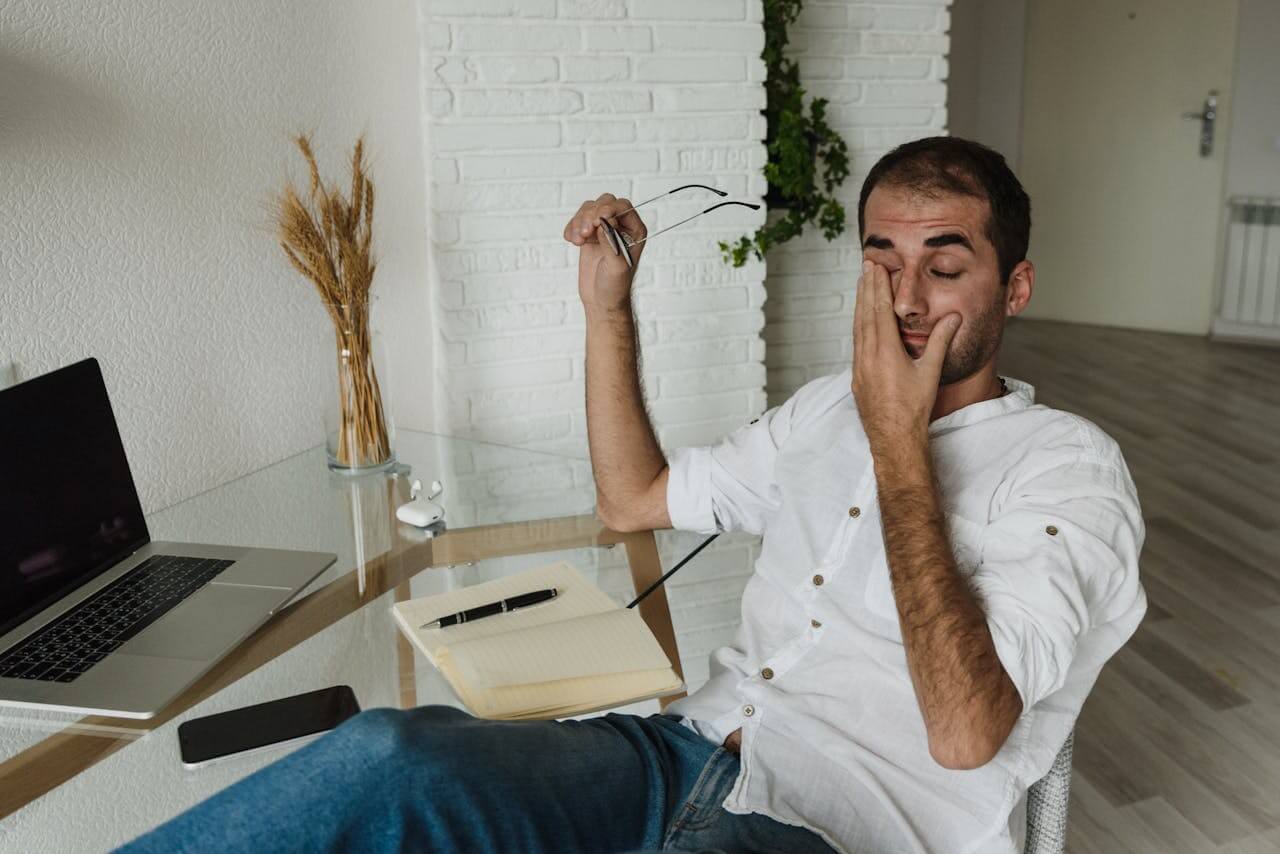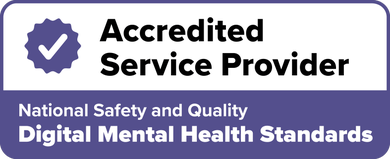How to manage ADHD burnout?
In a Nutshell
ADHD burnout is more than just feeling tired. It’s often the result of long-term mental, emotional, and physical strain from managing ADHD without enough support or rest.
Common symptoms include chronic fatigue, irritability, task avoidance, and emotional overwhelm, often misread as laziness or mood issues.
Recovery involves working with your brain, not against it, using practical strategies and support tailored to your struggles and symptoms.
If you're feeling unusually tired, struggling to focus, or finding everyday tasks harder than usual, it might be worth taking a closer look at what's going on. For adults with ADHD, this kind of ongoing mental and physical fatigue can sometimes point to something more than just a busy week.
Many people with ADHD describe a cycle of pushing themselves to keep up, masking their struggles, and running on empty until their energy finally runs out. This experience is often referred to as ADHD burnout.
It can affect how you work, how you connect with others, and how you feel day to day. While it isn’t a formal diagnosis, it's a pattern recognised by many clinicians and people with lived experience. Let’s explore what ADHD burnout can look like, why it happens, and practical steps that may help if you’re going through it.
What is ADHD burnout? Why does it happen?
ADHD burnout refers to long-term physical, mental, and emotional fatigue that develops when the effort to manage ADHD symptoms becomes overwhelming. It often affects those who feel they must constantly push through challenges to meet work, family, or social expectations.
Many adults with ADHD spend years finding ways to appear on top of things, often through masking. This may mean overcommitting, working longer hours, or hiding difficulties with focus, memory, or time management.
While people with ADHD are often creative, adaptive, and driven, this level of compensation can become draining over time. And when the pressure builds without the right tools or support, the result can be burnout that impacts every area of life.
Related: How to get an ADHD diagnosis?
Common ADHD burnout symptoms
Burnout can show up differently for different people. It’s helpful to look for patterns over time across emotional, cognitive, physical, and behavioural areas. Here are some signs to watch out for:
Emotional and mental changes
Mood swings, irritability, or emotional shutdown
Feeling overwhelmed by small tasks
Shame or guilt about not meeting expectations
Numbness, disconnection, or frequent self-criticism
Persistent low mood or discouragement
Cognitive difficulties
Difficulty concentrating or remembering details
Mental fog or blank moments
Procrastination, even for urgent tasks
Trouble making simple decisions
Getting stuck in ADHD paralysis for too long, where even small tasks feel impossible
Physical symptoms
Ongoing tiredness, known as ADHD fatigue
Changes in sleep patterns
Headaches, body tension, or digestive upset
Appetite changes
Increased reliance on caffeine, with less benefit over time
Behavioural patterns
Avoiding responsibilities or isolating from others
Drop in productivity or performance
Losing interest in hobbies or goals
Difficulty maintaining basic routines
Repeated cycles of hyperfocus followed by exhaustion
These symptoms can resemble depression or anxiety. However, ADHD burnout is often situation-specific. It tends to improve when pressure is reduced and support increases.
Depression, in contrast, affects nearly all areas of life and tends to persist even when external stress is removed. A qualified professional can help clarify the difference and suggest a suitable plan.
Managing ADHD burnout
Managing and getting over your ADHD burnout takes intentionality, especially around shifting how you approach demands, rest, and support.
Here are eight practical steps to support ADHD burnout recovery.
1. Step back from non-essential demands
If you're running on empty, continuing to push can make recovery harder.
When possible, reduce tasks that aren't urgent. This might mean adjusting work hours, postponing projects, or setting boundaries around your time.
2. Identify where your energy is going
ADHD burnout often comes from spending energy in the wrong places. Try tracking what drains you most and when your energy dips. Are you constantly switching tasks, masking your symptoms, or juggling unrealistic expectations?
Becoming aware of what isn’t working is the first step in changing it.
3. Create a flexible, low-pressure routine
People with ADHD often thrive with structure, but rigid schedules can backfire.
Instead, create a daily rhythm with a few core activities such as meals, a short walk, a key work task, and time to rest. Use visual aids like sticky notes, phone reminders, or colour-coded planners to help.
It might also help to include buffer time between commitments and plan short, guilt-free breaks.
4. Break tasks into smaller parts
Large or vague tasks can quickly trigger avoidance or ADHD paralysis, but breaking them into micro-steps helps reduce overwhelm. For example, instead of noting a reminder to “Write report,” it might help you to begin with steps like “List key points” or “Prepare report outline."
Using tools like the Pomodoro Technique, where you spend 25 minutes of work followed by a short break, can also make focused work feel more achievable.
5. Lean into your support network
Support can look like many things: a friend who checks in, a sister or brother with similar experiences, or a professional who helps you work through patterns.
If you don’t have support yet, ADHD-specific forums and support groups can be a good place to start. Speaking with an ADHD therapist can also help you determine and practise strategies that match your lifestyle, your goals, and how your brain works.
6. Rethink your relationship with stimulation
Caffeine is a common go-to for managing focus, but it’s not always effective long-term. Too much can worsen sleep, increase anxiety, and reduce emotional control.
Try using physical activity, music, hydration, or a change in environment as alternative ways to stimulate focus. The goal is to manage energy sustainably, not constantly fight to stay alert.
7. Gently reconnect with your strengths
When you're feeling burnt out, it can be hard to remember what you're good at. But your strengths are still there, even if they feel out of reach right now.
Many people with ADHD are naturally creative, quick-thinking, empathetic, or resourceful. These traits can support recovery, especially when used in ways that feel manageable and true to you.
You might also find that certain jobs or routines suit your strengths better than others. Some of the ideal jobs for people with ADHD include variety, flexibility, or hands-on problem-solving. Start by noticing the tasks that feel more natural and build from there.
8. Plan for long-term change
Recovery isn't linear, and setbacks are a normal part of the process. This is true for everybody, not just individuals living with ADHD.
To support long-term change, it helps to make time each week to check in with how you're feeling. Are your routines working? Are you starting to feel overwhelmed again?
Use those moments to adjust rather than push through. The more you build systems that suit your energy and strengths, the easier it becomes to stay out of the burnout cycle.
Related: Burnout vs depression
Final thoughts
ADHD burnout can feel heavy and all-consuming, especially when you're already giving so much of your energy just to get through the day. It can take a toll on your confidence, your relationships, and how you see yourself. But this experience can also be a turning point.
Recovery begins with small shifts: less pressure, more rest, and tools that work with how your brain functions. Over time, these changes create space for clarity, energy, and a stronger sense of control.
If you're noticing signs of burnout, reaching out to a psychologist or mental health professional can help you explore options that are tailored to you. You don’t have to fix everything at once. Start small, stay curious, and give yourself permission to shift and slow down.
Get Help
Overcome your adhd and book a free online consultation with one of our top rated therapists
Essential Reading about ADHD
Free Mental Health Tests
ADHD Burnout FAQs
ADHD burnout is a state of deep mental, emotional, and physical exhaustion that makes it hard to function, even with tasks you normally enjoy. Low motivation is more temporary and usually improves with rest or a change of focus.
Yes, it can. Medication and therapy can help manage symptoms, but burnout may still occur if stress builds up or support needs aren’t fully met.
There’s no official test, but a mental health professional can help assess your symptoms and explore what’s contributing to your exhaustion.
You don’t have to share everything. Focus on what helps you work better, like flexible deadlines, quieter spaces, or access to an EAP. Remember that mental health disclosures can be helpful but are not mandatory.
Prioritise routines that match your energy, use support systems, avoid masking, and take regular breaks before reaching a crisis point. When you're starting to feel overwhelmed, notice early warning signs like irritability, constant tiredness, or avoidance. Managing burnout is about building habits that help you thrive over time.
ADHD Therapists Available Now
VIC
Psychologist
Hi, I am Melissa, a trauma-informed psychologist with experience supporting individuals through mental health challenges, trauma, and managing neurodiversity. My approach...More
NSW
Psychologist
Hi, my name is Jimmy and I've been practising for about 7 years. I have worked almost my entire career in private practice, but before that I worked at Headspace and as R...More
NSW
Psychologist
Hi! I'm Zac, and I've been practising since 2017 through the NDIS for psychology and Behaviour Support. I have a Masters in Applied Behaviour Analysis and have worked wi...More








